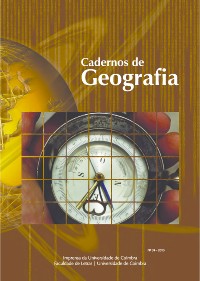Please use this identifier to cite or link to this item:
https://hdl.handle.net/10316.2/38315| Title: | O reforço do turismo como setor estruturante em Évora | Other Titles: | Reinforcement of tourism as a structural sector in Évora | Authors: | Simplício, Maria Domingas Camelo, Nuno Sobral |
Keywords: | Tourism;Évora;Historic Center;Urban functions;Turismo;Évora;Centro Histórico;Funções urbanas | Issue Date: | 2015 | Publisher: | Imprensa da Universidade de Coimbra | Abstract: | Sendo inquestionável a atração turística que a cidade de Évora e, em particular, o seu centro histórico
de há muito exerce, o presente estudo procura refletir sobre a forma como, ao longo dos últimos 30 anos, o
setor do turismo, quer como atividade económica, quer em termos da estrutura funcional urbana, tem reforçado
o seu peso, relativo e absoluto, como setor estruturante na cidade.
Nesse sentido, e tendo presente, por um lado o conjunto dos elementos patrimoniais e monumentais da
cidade e, por outro, a sua evolução demográfica recente, procedeu-se a uma avaliação da ocorrência e distribuição
das funções urbanas mais interligadas com o setor do turismo no período entre 1985 (antes da classificação
do Centro Histórico de Évora como Património Mundial) e 2014, tendo 2012 como data de referência intercalar,
por marcar o evidente reflexo na situação atual dos constrangimentos económicos e financeiros.
No final, procura-se evidenciar algumas perspetivas sobre o que, para a área temática em análise, se pode
esperar para a sua evolução nos próximos anos. Being unquestionable the tourist attraction capacity that the city of Évora and, in particular, its historic center has long been exercised, the present study seeks to reflect on how, over the last 30 years, the tourism sector, both as an economic activity and in terms of urban functional structure, has strengthened its weight, relative and absolute, as a structuring sector in the city. For that purpose, and taking into account, on the one hand, all the heritage and monumental values of the city and, on the other, its recent demographic trends, we carried out an assessment of the occurrence and distribution of urban functions more connected with the tourism sector, from 1985 (before the classification of the Historic Center of Évora a World Heritage Site) to 2014, taking 2012 as interim reference date, since this year marks the clear manifestation in the current situation of economic and financial constraints. In the end, we seek to highlight some perspectives on what, for the thematic area under review can be expected for its evolution in the coming years. |
URI: | https://hdl.handle.net/10316.2/38315 | ISSN: | 0871-1623 2183-4016 (digital) |
DOI: | 10.14195/0871-1623_34_5 | Rights: | open access |
| Appears in Collections: | Cadernos de Geografia |
Files in This Item:
| File | Description | Size | Format | |
|---|---|---|---|---|
| o_reforco_do_turismo_como_setor_estruturante_em_evora.pdf | 21.14 MB | Adobe PDF |  |
Items in DSpace are protected by copyright, with all rights reserved, unless otherwise indicated.
